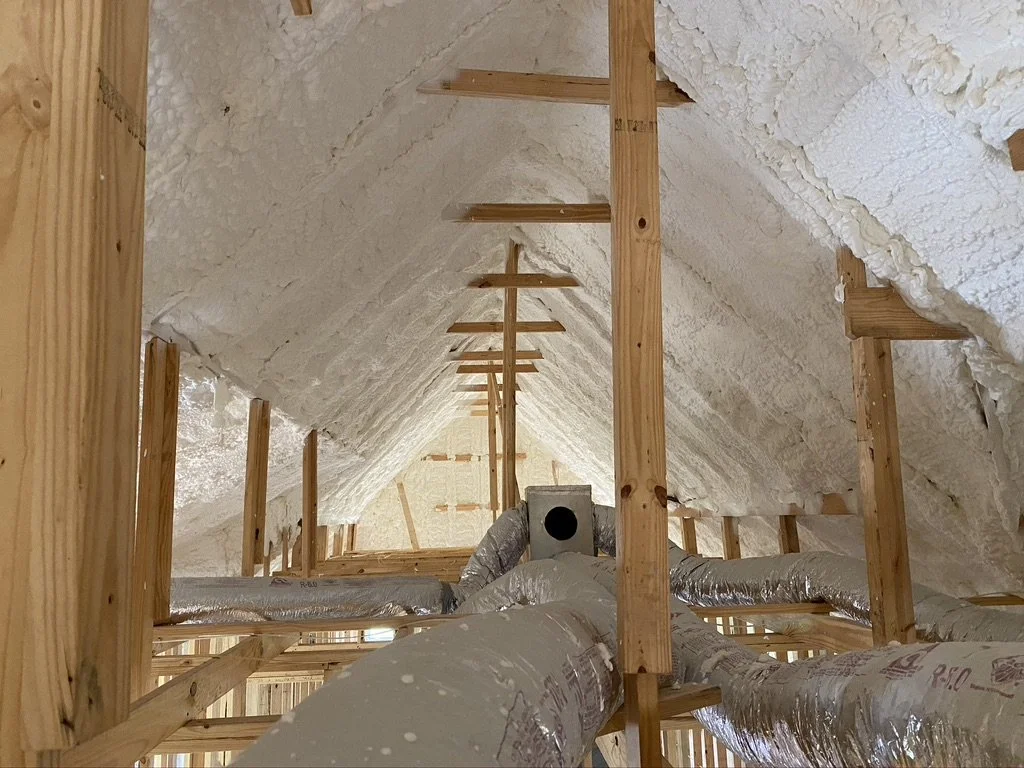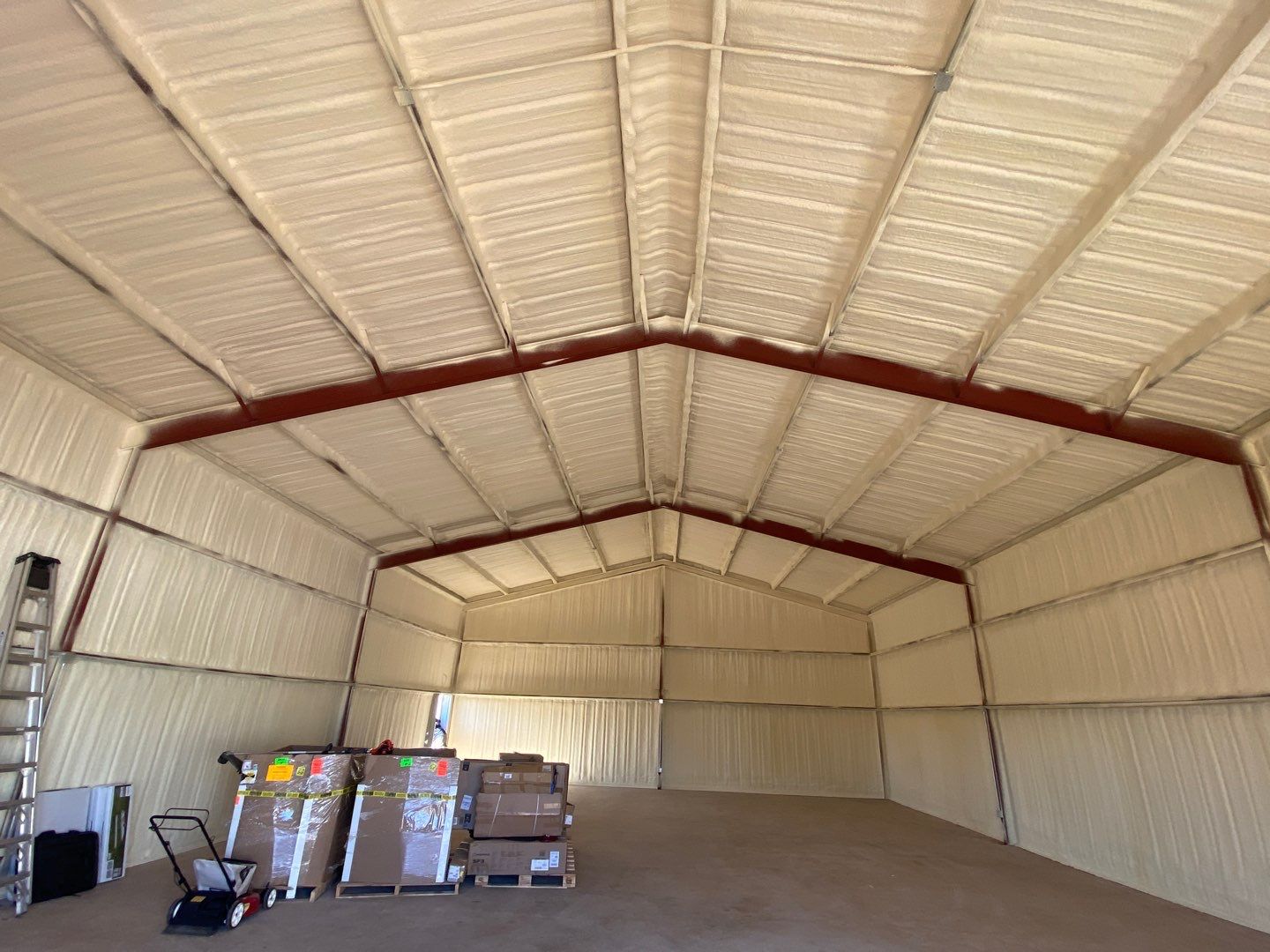Open-Cell Spray Foam insulation offers effective sound absorption in interior spaces, especially for airborne noise such as voices, television, and environmental sounds. Its porous, soft structure dampens sound by reducing reflections and resonance inside wall cavities. It does not block sound entirely but reduces echo and mid-to-high frequency noise. Combining it with acoustic enhancements—like resilient channels, acoustic caulk, or mass-loaded vinyl—delivers significantly better overall sound control.
This guide begins with a clear answer and then expands into detailed technical data, application scenarios, and practical tips to help you determine when and how open-cell insulation is best used for sound reduction.
Core Answer
Open-Cell Spray Foam insulation provides moderate acoustic attenuation by absorbing sound waves within cavities. It performs best when reducing echo, mid-range noise, and indoor chatter. To manage sound transmission effectively, integrate it with structural solutions like resilient channels, double drywall, or specialized acoustic barriers.
Key considerations right away
- Efficient for echo reduction and everyday noise, not for full soundproofing
- Works best within a complete sound-control assembly
- Requires professional application by an open-cell spray foam insulation contractor to ensure both acoustic and thermal performance

How It Works
Mechanism of Action
The open-cell structure holds air pockets that disrupt sound waves, reducing reverberation and absorption coefficient. In cavities, the foam fills voids and seals gaps, further limiting sound passage.
Acoustic Benefits
- Absorbs mid-to-high frequencies efficiently
- Reduces flutter echo in closed spaces
- Improves comfort by blending thermal and acoustic insulation
What It Doesn’t Do
- Does not fully block low-frequency impact noise (e.g., footfalls, bass)
- Doesn’t substitute for dense barriers needed for high-performance sound isolation
Sound Control Properties Comparison Table
| Feature | Open-Cell Spray Foam | Closed-Cell Spray Foam | Fiberglass Batts | Mineral Wool |
| Airborne Noise Reduction | Moderate | Low | Moderate | High |
| Impact Noise Resistance | Low | Moderate | Low | High |
| STC Rating Potential (Wall Assembly) | ~37–40 | ~34–36 | ~35–39 | ~45+ |
| NRC (Noise Reduction Coefficient) | ~0.65–0.75 | ~0.30 | ~0.65 | ~0.90 |
| Water Resistance | Low | High | Low | Moderate |
| Expansion & Gap Sealing | High | Low | None | None |
Technical Specifications for Open-Cell Spray Foam insulation
| Specification | Typical Value | Notes |
| Density | 0.4 – 0.6 lb/ft³ | Lightweight, flexible internal foam |
| STC Improvement | +4 to +8 points | Depends on wall assembly |
| NRC (Noise Reduction Coeff.) | 0.65 – 0.75 | Higher absorption at mid frequencies |
| R‑Value (Thermal) | 3.6 – 3.8 per inch | Offers thermal and acoustic benefits |
| Typical Thickness | 3 – 5 inches | Adapts to cavity depth |
| Cure Time | ~24 hours | Full acoustic capability after cure |
Situations Where It Helps Most
Interior Walls and Ceilings
Ideal for bedrooms, home offices, shared walls. It minimizes voice-level noise.
Bonus Tip Pair with acoustic sealant and double-layer drywall for improved STC.
Floors and Ceilings Between Levels
Provides minor sound absorption—combine with floating subfloor or resilient underlayment for footfall noise reduction.
Attics, Rooflines, Crawl Spaces
Reduces environmental noise such as rain or HVAC systems. When insulated under metal roofs, it can help soften rain impact.
Bonus Tip A perimeter seal around penetrations ensures continuous acoustic insulation.

Effective Sound-Control Methods Paired with Foam
| Technique | Description | Open-Cell Compatibility |
| Resilient Channels | Decouples drywall to break sound path | Compatible, high impact |
| Acoustic Caulk | Seals cracks to stop sound leaks | Easy to apply, crucial |
| Double Drywall | Adds mass to existing wall | Effective when properly installed |
| Mass-Loaded Vinyl | Dense sheets to block sound | Works when sandwiched inside wall |
| Mineral Wool Layer | High-density insulating barrier between assemblies | Enhances open-cell absorption |
Things to Consider Before Making a Decision
- Noise Type and Source
Airborne vs. impact noise require different treatments. Open-cell is efficient for airborne noise but not structural vibration. - Wall Assembly Details
STC ratings depend on drywall layers, framing spacing, seals, and resilient components. - Budget vs. Performance
Open-cell costs more than fiberglass, but offers better energy and noise control. Expect combined benefits in comfort and sound absorption. - Fire and Code Requirements
Some regions require flame barriers (e.g., gypsum board) or ignition barriers for open-cell foam in exposed areas. - Installation Expertise
Uniform coverage is essential—gaps reduce both acoustic and thermal efficiency. Hire a certified open-cell spray foam insulation contractor.
Market Insight for Context
A 2024 market study of North American residential construction reported
- Over 35% of new homes use open-cell spray foam for combined thermal and acoustic benefits
- Less than 10% rely on it alone for soundproofing—reflecting its supporting role in multi-layer sound-control assemblies
Common Questions
Does open-cell spray foam stop low-frequency sounds?
No. Low-frequency and bass sounds require dense barriers and damping layers.
Can it match dedicated acoustic insulation like mineral wool?
No. Mineral wool and MLV (mass-loaded vinyl) outperform foam for full sound isolation.
Is it suitable for media rooms or recording studios?
Not as a core solution. Incorporate decoupled walls, high-mass layers, and absorption panels for heavy-duty control.
Is DIY application sufficient for acoustic performance?
No. Effective sound control demands even cavity fill and complete sealing—best done by a professional open-cell spray foam insulation contractor.
Bonus Tips for Best Results
- Plan cavity layering Install foam first, then resilient channels and drywall for decoupling
- Seal all openings Acoustic caulk around outlets and pipes prevents noise leakage
- Check curing time Acoustic benefits take effect after full cure—typically 24 hours
Conclusion
Open‑Cell Spray Foam insulation offers moderate sound absorption and echo reduction by filling cavities and sealing gaps. It excels at controlling everyday conversational or environmental noise. For stronger sound isolation—especially low-frequency or impact noise—it should be integrated into a multilayer system with barriers and decoupling elements. Evaluate your noise sources, wall assembly, and code compliance before choosing this solution. Always rely on a professional open‑cell spray foam insulation contractor to ensure performance and safety.
Reviewer: With 11 years in the spray foam field, Aiden Baker reviewed this content and provided advice on building steady growth through practical, honest communication.
FAQ
- Does open-cell spray foam insulation make a room completely soundproof?
No. It absorbs sound to reduce echo and airborne noise but does not block all sound. Full soundproofing requires dense materials and decoupling techniques. - How thick should the foam be to achieve good sound absorption?
Typically, 3 to 5 inches provides an effective absorption layer. Actual performance depends on cavity depth and wall construction. - Is open-cell foam better than fiberglass for sound control?
It offers more comprehensive cavity filling and air sealing, making it better for echo reduction. However, mineral wool still provides better isolation. - Can you install drywall directly over open-cell foam for sound control?
Yes, but for improved results, use double drywall, acoustic glue, or resilient channels to decouple sound paths. - 5. What happens if open-cell foam is used without additional acoustic materials?
It will reduce echo and airborne noise moderately but won’t block sound from traveling between rooms or floors effectively.